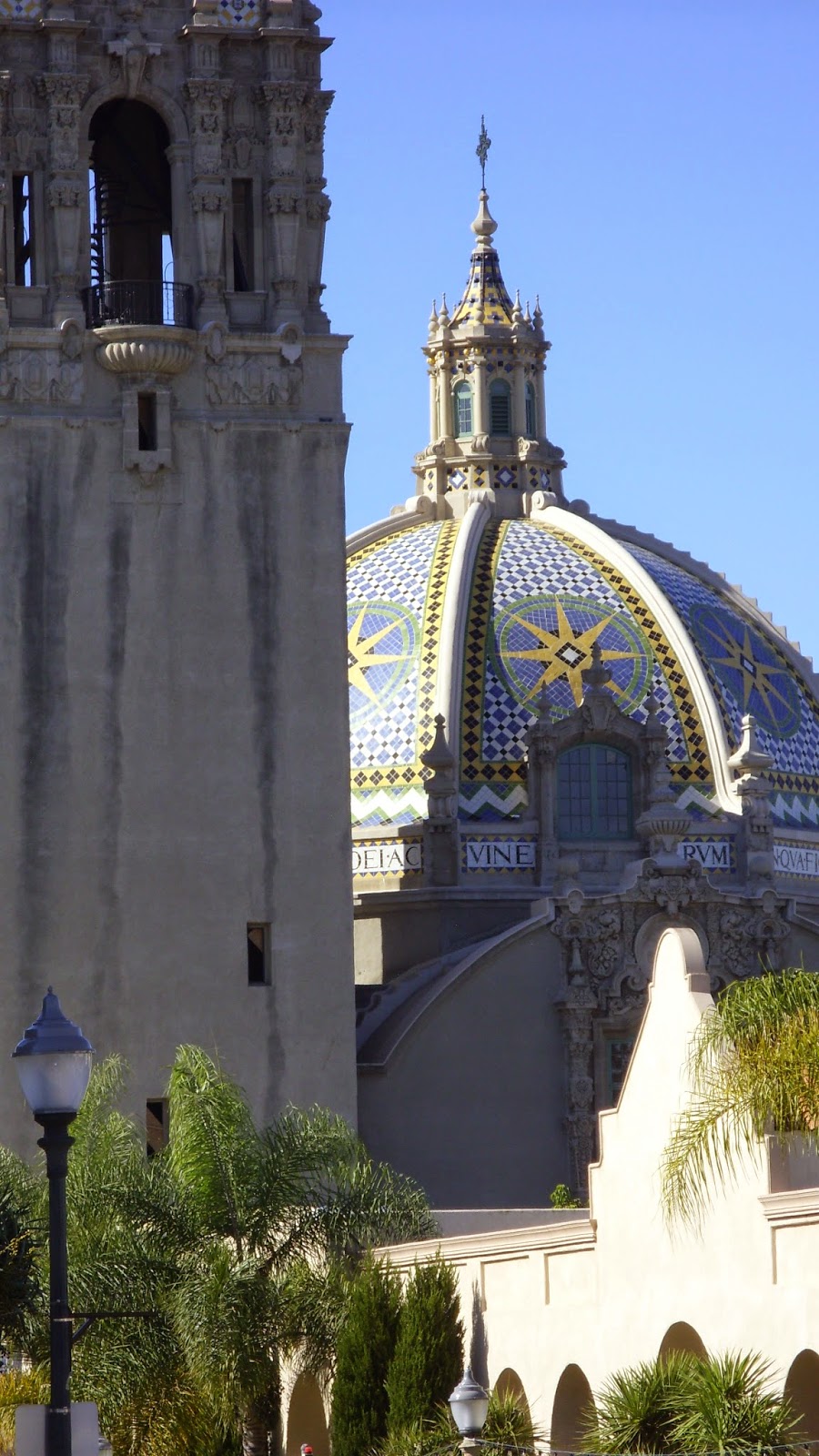An unbelievable park
San Diego really has many attractions; one of the main ones is Balboa Park, a really big urban cultural park. It hosted the 1915-16 Panama - California Exposition as well as the 1935-36 California Pacific International Exhibition. It has been maintained in tiptop condition and has gardens, walking paths, museums and theatres. There are also informal markets and many stalls of different kinds. It looks like what one would expect of a magic castle, like what one hoped castles looked like until one actually saw one.
Wendy Mayer and Dan Corbett kindly took me along on an outing there. The few hours we spent there was really not enough. Like Dan said, one could spend several days exploring this amazing park doing a part of it on a day only. We never even had a look at the world famous zoo or the marine aquarium.
 |
| The main art museum |
 |
| Wendy in the park |



Having gaped at the magnificent buildings housing so many treasures we walked on past a group of musicians on drums such as I have never seen before. Steel drums are hammered until they have many rounded dents all of which give different sounds. Used skilfully they produce beautiful music.
 |
| For a moment I thought they were marimbas. |
We walked on to the succulent and rose gardens. I never used to like succulents coming as I do from a dry climate myself. This is a rather special garden though and really big.


 |
| Looking out over the landscape one realises that California is bone dry. |
 |
| What an amazing plant. |
 |
After the succulents the roses were, well, pretty.
|
 |
| Lovely, endless gardens |
 |
| The greenhouse |
 |
| So many beautiful orchids. |


Wandering about was thirsty work so we stopped at - a first for me - a lemonade stand. On this hot day it was delicious.
San Diego at night

















































